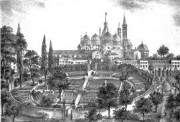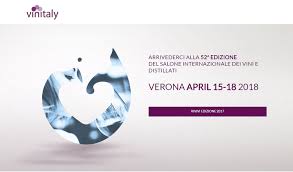Brief City’s History
Mediolanum (in Latin means “in the middle of the Plain”) was founded in the fifth century AD, with the unification of many, neighboring small countries. In the fourth century AD the whole area was invaded by the Celts. The new population, called the Gauls Insubri, settled in the City, and ruled until the arrival of the Romans, who conquered it in 222 AD, after a long siege, also fighting with Hannibal. Milan became first a City, then a Imperial Colony, and, finally, the Capital of the Duchy of Milan (Capital of the West Empire and the Imperial residence, from 286 AD to 402 AD). The City prospered, thanks to the hard work and devotion of its people, who built a double fortified walls, many temples, some very elegant palaces, a circus, a theater and other relevant structures. In 313 AD Emperor Constantine, with the very famous Edict of Milan, allowed the practice of Christianity and other religions within the Empire. Soon Christianity became the religion of reference. In that period of imperial decadence, Milan had to face the Barbarians, who were invading Italy. The imperial Capital was moved to Ravenna and the City was conquered by the Heruli, led by Odoacer. Subsequently, the Goths, led by Theodoric defeated the Heruli and ruled the City for nearly forty years, until Emperor Justinian decided to attack the eastern Goto’s King Theodosius (descendant of Theodoric) in the famous War of the Goths. The conflict led to confusion and, in 539 AD, Uraia’s Goths burned the town, causing many casualties. Later, in 559 AD, the general Narses roman troops reconquered Milan. In the sixth century AD the Lombards, led by King Alboin, came to Milan, conquering the entire City and its surroundings, and creating the new Kingdom of Lombardy, whose Capital was Pavia. Meanwhile Milan enriched, becoming very prosperous. The long reign of Lombards over Milan ended in 774 AD, with the arrival of Charlemagne, the conquest of Italy and the deposition of the last Lombard king: Desire. Charlemagne was crowned Emperor in Rome, and subsequently the Holy Roman Empire was reborn: a new Bishop and a new Count were sent to Milan. In the power vacuum left by the defeat of the Lombards in Milan, Nobles and Bishops began to increase their influence. The power of the Nobles and the Clergy led the City Council to move towards a more democratic form of local government, becoming a free city-states, with a strong influence on most of Lombardy. The Empire, Germany-based, did not accept to lose its influence on Milan and, therefore, Frederick Barbarossa, along with the Lombard League, restored it in 1162 AD. Later, the City was at the mercy of powerful Noble families, and was the scene of some battles for its control, including that between Torre familiy and Visconti family, won by the latter. In the fifteenth century, Milan was governed by the Sforza family, which built a Castle located in the center of the City (the Sforzesco Castle). Towards the end of 1400 AD, France and Spain began to claim some rights over the Duchy of Milan. France was the first to attack the City in 1499 AD, conquering and pushing away his Lord Ludovico il Moro , but Spain, whose sovereign was the Emperor of the Holy Roman Emperor, Francis I° imposed a Sforza member to the throne. Francis died without heirs and Charles V of Spain, intervened once again, to promote the appointment of his son as the new Duke of Milan. France and Spain therefore calmed down with the resulting Peace of Cambrésis, which recognized to Spain the right to rule. The long Spanish domination was also crossed by the plague, in 1629 AD. After the Spanish King’s departure, the Austrians arrived, taking advantage of the power vacuum left by the departure of Charles II of Spain, conquering and then governing Milan, from 1706 AD to 1796 AD. In that year, Napoleon entered Milan, chasing the Austrian Archduke Ferdinand of Austria Este, and obtaining the support of the people of Milan. Napoleon was in Milan to tackle the Jacobins. Once back in France, the population was subjected to a strong repression by the Austrians. Then, Napoleon decided to return to save the City and in the battle of Marengo he completely defeated the Austrians , and he subsequently appointed the First Consul. The Kingdom of Italy was now under construction and Milan became the Capital of the Italian’s political and economic scenery. In 1815 AD, Napoleon abdicated at the Congress of Vienna and Milan returned to the Austrians for the umpteenth time, but this time not as a Duchy, but as the Capital of the new Kingdom of Lombardy-Venetia. Later, after the War of Independence, Milan was annexed by the Kingdom of Sardinia. The Kingdom of Sardinia became the Kingdom of Italy and Milan became the Capital of the newly formed Cisalpine Republic, from 1796 AD to 1799 AD. The history of Milan, in the contemporary period, tells us that the City in 1802 AD, became the new Capital of the Italian Republic and in 1805 AD, became the Capital of the new Kingdom of Italy.
The City
Milan is the most modern and dynamic City of Northern Italy and the whole country. Being passed, after the Medieval period of the Italian dominions, through other numerous foreign dominations (Spanish, Austrian and French), it has acquired a European spirit and architecture . The concentric form of the City, has evolved in different historical periods and is made by three ringroads: the first walls (now Circle of canals), corresponding to the canals, were built in 1158 AD, as a defense against Barbarossa, and border the Medieval City area; the second walls ( now pulled down ), now called Circle of the ramparts, were built by the Spaniards in 1560 AD, as a defense, border the inner ringroad; the third and final ring, built in 1884 AD, as a result of a Master Plan, defines the Urban area of Milan. Milan has always been an industrious City, with an economy based on agriculture and handicrafts, in the Middle Ages and the Renaissance, to subsequently reach a financial (banking and insurance), services (publishing, fashion, design, advertising, scientific research, entertainment, marketing, etc …) and industrial economy. A rich and modern City, with probably the best italian nightlife, thanks to sport champions, models, actors, and entertainment people, and also thanks to many young people and students who come here from all over the World. Some of the best areas for Milan nightlife are: Navigli, Brera, Corso Como, Peace Arch, Columns of San Lorenzo, Porta Ticinese. In this area there are many bars, restaurants, clubs, discos and clubs of all kinds. If you are looking for green and nature, Milan is not the perfect City! The Milanese “Central Park” is, without doubt, Sempione Park, which expands behind the Sforzesco Castle, then there are other large gardens as the Public Gardens, located nearby Porta Genova, the large North Park and Trenno Park, and some much smaller ones such as the Ravizza Park and the Park of the Basilicas. These Parks, however, are usually a bit far from the City, or kind of surrounded by traffic and noise. Milan, therefore, is not the perfect City to seek peace and nature, but it is instead the City where you can find excellent job opportunities, where to look for interesting and attractive places to find every night without getting bored, where to shop, to meet celebrities, and where to be constantly immersed in a flow of people in transit to and from different places.
What to visit :
Monuments :
Milan is a very nice old town, made up of wide avenues, lined with imposing buildings of the seventeenth and eighteenth centuries, huge squares, and various monuments. The most important are:
1. Milan Cathedral: This incredible Church, the fourth largest in the World (after St. Peter’s in Rome, St. Paul’s in London and Holy Mary in Seville), is dedicated to Rising Holy Mary, and located in Duomo Square, in the heart of Milan historic center . It’s an extraordinaryand richly detailed monument, unique in the World, built in about 600 years, from the fourteenth century to the twentieth century. The Cathedral has a maximum width of 96 meters, a height of 56.50 meters, an area of 11,700 square meters, 3,400 biblical subject’s statues, 135 spiers and the golden statue of the Madonna (the very symbol of the City of Milan), which is located at 108 meters in height. Rose windows, large windows, buttresses, spiers and pinnacles identify the mainly Gothic style of the Cathedral of Milan. The interior has a huge Latin cross’ shape, and is characterized by five decreasing naves, a transept with three naves and a polygonal apse flanked by two vestries.
2. Sforzesco Castle is a huge castle, in medieval style, which began to be built in 1450 AD by Francesco Sforza as his residence, but never entirely completed, and located in the center of Milan. It was originally part of the medieval walls of the City. Over the centuries it has been partly demolished and rebuilt several times, expanded, modified, enhanced and embellished. The huge structure is a square with sides of about 200 meters, 1 large main courtyard, two minor courtyards, 7 feet thick walls, four corner towers, a beautiful tower above the main entrance, a large moat and a star-shaped plan. During the stay of the Sforza family, the Castle was used as a residence and the likes of Leonardo were used to paint some of the rooms; in the following periods, with Spanish and Austrian, the Castle became a simple place where to deploy troops. In the French period Napoleon demolished the outer walls, but thankfully, he saved the main building. On Austrians return , the Castle has been restored and now it is in excellent conditions. Inside there are several permanent galleries with paintings by old masters, a Museum of Ancient Art, a Museum of Musical Instruments, a Museum of Mobile, Collections of Applied Art, Extra-European Collections, Rivellino’s Collections of the Holy Spirit (excursion through the roofs and covered walkways on the outside walls of the Castle), the Historical Archives, the Trivulziana Library, the Art Library of the Sforzesco Castle, a Civic Collection of prints by Achilles Bertarelli and the Castle Library
3. The Basilica of Saint Ambrose (379 AD – 386 AD) is a Church made of brick and stone, in total Romanesque style, built by Ambrose, Bishop of Milan and patron saint of Milan, and later restored and modified, until you reach the actual appearance in about 1099 AD. The Church, the gabled, has three naves and has no transept. Opposite the church is a large courtyard with columns on all four sides, and, at his side, there are two towers, one dating from the eighteenth century (the lowest) and one dating back to 1144 AD. The Basilica has also incorporated the beautiful, old Chapel of St. Victor (fourth century), an example of early Christian art, in which appears the beautiful golden dome.
4. Columns of San Lorenzo: 16 columns of Romanesque origin, surmounted by Corinthian capitals. The columns were part of a Roman building, perhaps Terme.
5. Cathedral of San Lorenzo, near Porta Ticinese, there is this great Church, of Roman origin. Grew up between the fourth and fifth centuries, the Church has a Romanesque style, which has been an example to many famous architects of the time. The church has a square, around which were placed three other buildings, and in front of which was placed a quadrilateral, with a colonnade. At the four corners four square towers have been put. The roof was a large dome which unfortunately collapsed. a new dome was then built towards the end of 1500. Later the church was enriched with other structures, until its completion around 1894 AD.
6. The Vittorio Emanuele II Arcade (1865 AD – 1877 AD) is located on the homonymous course. This great and beautiful passage connects Duomo Square to Scala Square, where he is the homonymous Theater. Designed by the architect Giuseppe Mengoni, the Arcade consists of a long axis of 196 meters, crossed by a shorter one of 105 meters, with a large octagonal square in the intersection of the two, with frescoes, representing the continents, located on the lunettes of the ceiling and a mosaic on the floor representing the Savoy coat of arms. The coverage of the gallery is a beautiful blend of iron and glass, high, respectively, 32 meters and 47 meters above the square. Inside the Arcade there are many luxury shops, bars, restaurants and a great prestige Hotel.
7. The Refectory of the Dominican convent of Santa Maria delle Grazie: Leonardo da Vinci painted, on the north wall of the great hall of the convent refectory, between 1494 AD and 1498 AD, what later became one of the World’s most famous paintings of all times : the Last Supper. Its state, despite many careful restorations during the years, it is not perfect because it was painted with a mixed technique that had many duration problems.
8. The Gates of Milan: The six principal Gates of the City of Milan were rebuilt by Napoleon within the Bastions, on the ruins of the ancient Roman, Medieval and Spanish Gates:
1) Porta Garibaldi (Porta Comasina already) built in 1826 AD which opened out north toward the City of Como;
2) Porta Romana built in 1596 AD, which opened out south-east toward the City of Lodi;
3) Porta Ticinese built in 1802 AD which opened out south toward the City of Pavia;
4) Porta Venezia (Porta Orientale already) built in 1827 AD, which opened out north-east towards the town of Gorgonzola;
5) Porta Nuova built in 1810 AD which opened out north toward the City of Monza;
6) Porta Magenta (formerly Port Vercellina) built in 1805 AD which opened out west toward the City of Vercelli.
9. The Arch of the Peace is a great Triumphal Arch, made in white marble with equestrian bronze statues on its top, 25 meters high and 24 meters wide, built in 1807 AD in the center of Piazza Sempione, born in ancient times as part of Porta Sempione.






